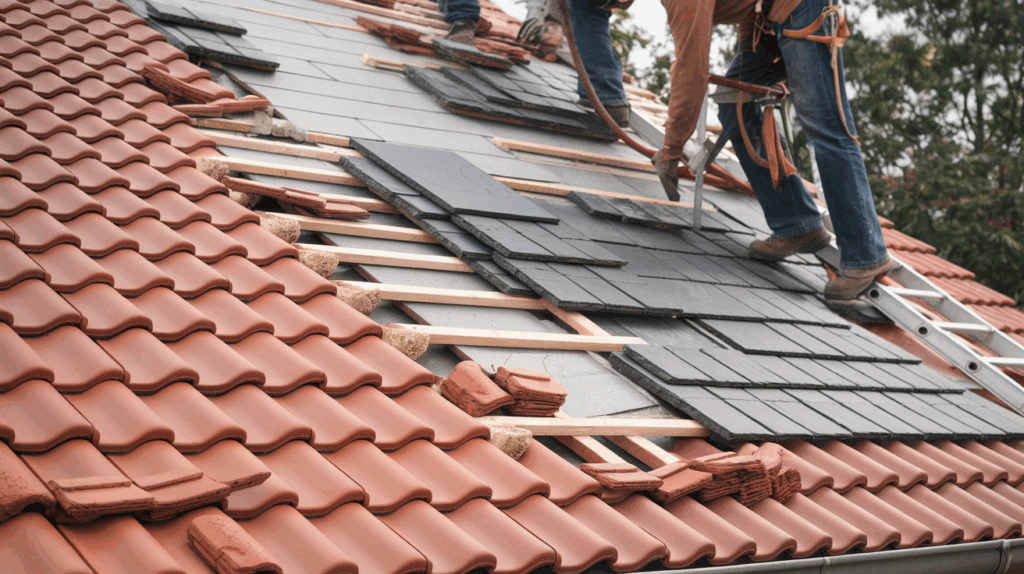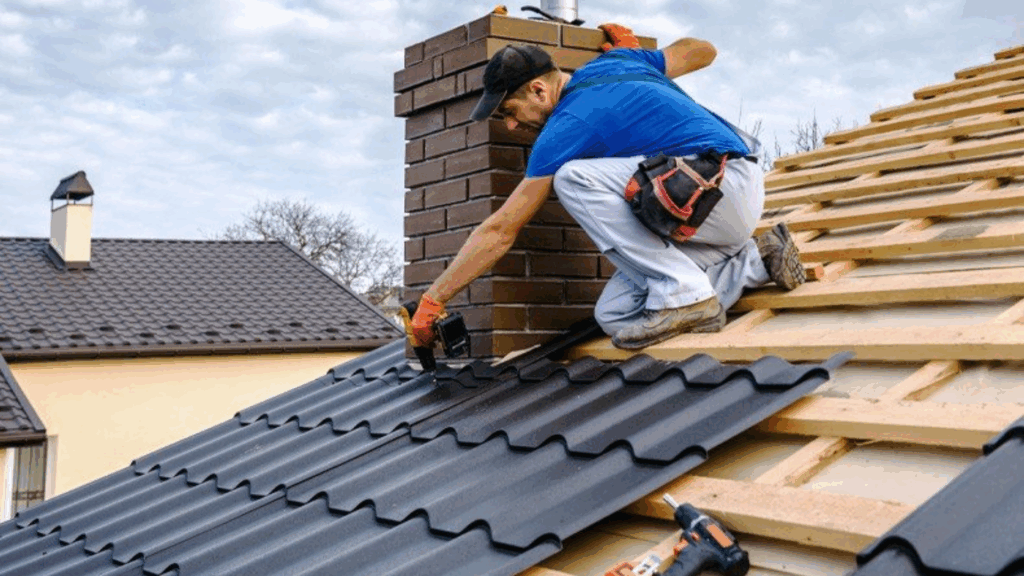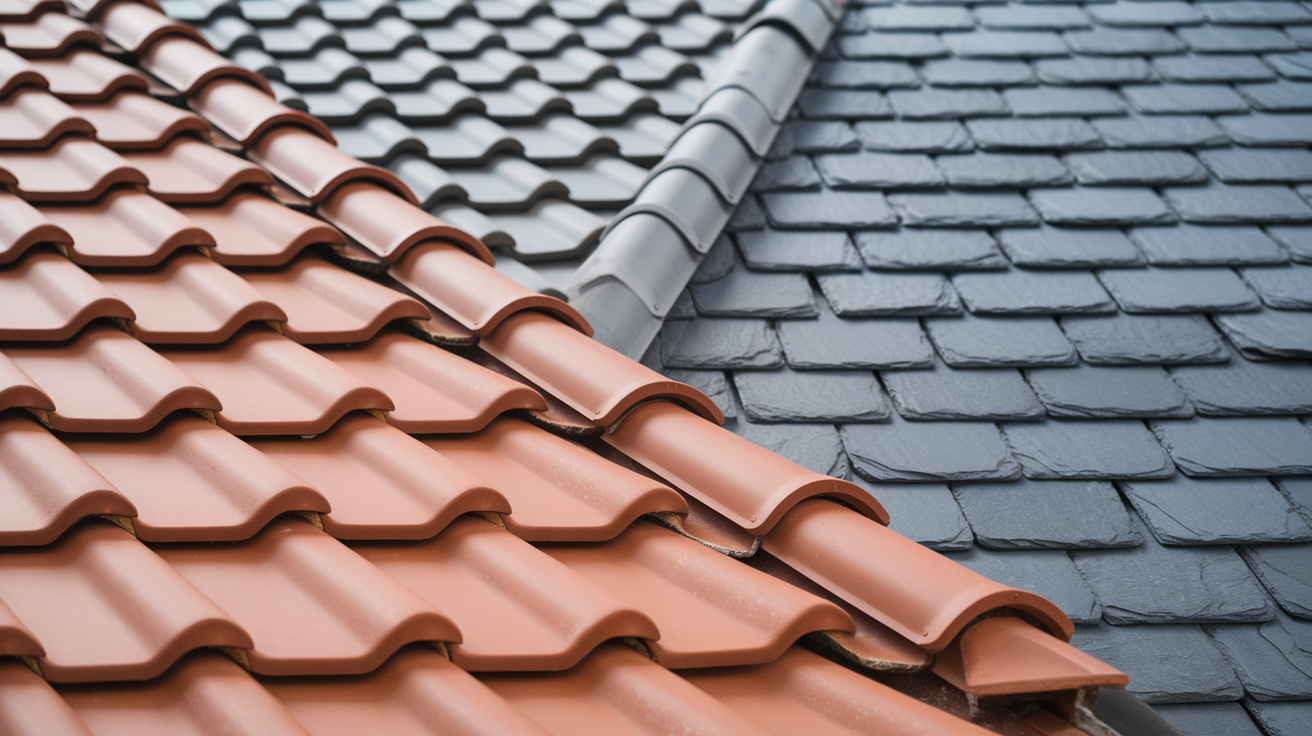When it comes to replacing your roof, the cost is often one of the biggest concerns.
Tile roofing is a popular option for homeowners due to its durability, aesthetic appeal, and long lifespan.
However, it’s also one of the more expensive roofing materials. If you’re considering a tile roof replacement, it’s important to understand the costs involved.
In this blog, I’ll walk you through the average costs of tile roof replacement, the factors that influence pricing, and what you can expect.
I’ll also provide tips on how to get the best value for your investment and ensure you choose the right tile roofing option for your home.
If you’re replacing an old roof or upgrading to tile, understanding the costs can help you make an informed decision.
Why Choose a Tile Roof?

Tile roofs are known for their longevity, energy efficiency, and aesthetic value.
Made from materials like clay, concrete, or slate, they can last anywhere from 50 to 100 years with proper maintenance.
While they tend to be more expensive upfront, tile roofs offer excellent protection against harsh weather conditions, making them a popular choice in areas with high heat, heavy rainfall, or even wildfire risk.
In addition, tile roofs are fire-resistant, energy-efficient, and provide a timeless look that can enhance the curb appeal of your home.
Average Cost of Tile Roof Replacement
The cost of replacing a tile roof typically ranges from $10,000 to $30,000 for a standard residential home. Factors like roof size, tile type, and location can affect the price, and costs may increase based on the job’s complexity.
Breakdown of Costs
- Clay Tiles: $15 to $25 per square foot.
- Concrete Tiles: $10 to $18 per square foot.
- Slate Tiles: $20 to $30 per square foot.
- Labor Costs: Typically range from $3 to $7 per square foot, depending on your location.
If your roof is larger, expect higher costs due to the increased amount of material and labor required.
For a 1,500-square-foot roof, the total cost could fall between $15,000 and $45,000, based on the type of tile and additional factors.
Factors That Affect Tile Roof Replacement Costs

Several key factors can impact the cost of your tile roof replacement. Understanding these variables can help you plan and budget more effectively for the project.
1. Type of Tile
The type of tile you choose plays a huge role in the overall cost. Here are the three most common types of tile roofs:
- Clay Tiles: These tiles are the most common and are known for their durability and aesthetic appeal. They can be more expensive due to their manufacturing process, especially if you opt for imported tiles.
- Concrete Tiles: Concrete tiles are generally more affordable than clay tiles but still offer excellent durability. They are a good option if you’re looking for something cost-effective yet sturdy.
- Slate Tiles: Slate is one of the most expensive roofing materials but offers unmatched durability and natural beauty. If you’re looking for a luxurious option and are willing to invest, slate tiles are a great choice.
2. Roof Size
The size of your roof is another significant factor.
A larger roof will naturally require more material and labor, driving up the cost of the replacement.
For example, a 2,000-square-foot roof could cost between $20,000 and $60,000, depending on the tile type and other factors.
3. Labor Costs
Labor costs can vary based on your location, the complexity of the project, and the contractor you choose.
Labor for tile roof replacements is typically charged at $3 to $7 per square foot.
In some areas, labor costs could be higher due to local demand, permitting processes, or the roofing company’s expertise.
4. Removal of Old Roof
If you have an existing roof that needs to be removed, this will add to the cost.
The average cost for roof tear-off ranges from $1 to $4 per square foot.
This cost can increase if your existing roof is particularly difficult to remove, such as if it’s a multi-layer roof or if the roof is very steep.
5. Location and Accessibility
The location of your home also plays a role in determining cost.
Roof replacements in urban areas or areas with a high cost of living tend to have higher labor costs.
Additionally, if your roof is difficult to access due to the height of your home or surrounding structures, it may require extra equipment or time, which can increase the overall cost.
Additional Costs to Consider
Apart from the basic cost of the tiles and labor, there are several other factors that could affect your final bill.
1. Underlayment
Underlayment is an essential part of any roofing system, and the type you choose can affect the overall price.
In most cases, roofing companies use a synthetic underlayment, but higher-quality options like felt paper or ice and water shields can add to the cost.
2. Roof Vents and Chimney Flashing
If your roof has vents or a chimney, you will need to ensure these are properly flashed during the replacement.
This is a critical part of roof installation to prevent leaks, but it may add to your cost.
3. Permits
In many locations, you’ll need a permit for roof replacement.
The cost of permits can vary based on your local government’s fees.
Make sure to check with your contractor to see if they will handle this or if it will be an additional charge for you.
Cost-Saving Tips for Tile Roof Replacement
If the cost of replacing your tile roof seems daunting, there are ways to save money while still achieving a quality result.
- Get Multiple Quotes: Always get at least three quotes from different contractors. Prices can vary significantly, and comparing options ensures you get the best deal for your budget.
- Choose a More Affordable Tile Option: If you’re on a budget, consider choosing concrete tiles instead of clay or slate. Concrete tiles offer great durability and cost less, making them a budget-friendly option.
- Plan During the Off-Season: Roof replacement costs can fluctuate based on the time of year. Plan your project during the off-season (fall or winter) when roofing companies may offer lower labor rates due to fewer jobs.
- Do Some Work Yourself: Save on labor costs by removing old roofing materials yourself. If you’re comfortable with DIY tasks, this can lower your overall expenses, while professionals can handle the installation.
- Consider Smaller Roof Areas First: If your roof replacement budget is tight, prioritize smaller areas that need immediate attention. Completing your roof replacement in stages can help spread out the costs over time.
- Ask About Discounts and Promotions: Many roofing companies offer discounts or special promotions, especially during the off-season or as part of a seasonal sale. Don’t hesitate to ask about any potential deals.
- Evaluate Warranty and Longevity: While cheaper materials may seem tempting, ensure you’re factoring in long-term costs. Investing in high-quality tiles that last longer may reduce future repairs and replacements, saving you money in the long run.
Conclusion
Replacing a tile roof is an investment that can enhance the look and durability of your home for decades.
The average cost for tile roof replacement varies based on factors like the type of tile, roof size, and location, with costs ranging from $10,000 to $30,000 for a typical residential home.
While tile roofs are more expensive than other roofing materials, their longevity, energy efficiency, and aesthetic appeal make them a valuable option.
To ensure the best value, I recommend researching different tile types, getting multiple quotes from contractors, and considering long-term savings on energy bills.
By understanding the costs involved and planning carefully, you can make an informed decision and enjoy the benefits of a tile roof for many years to come.

